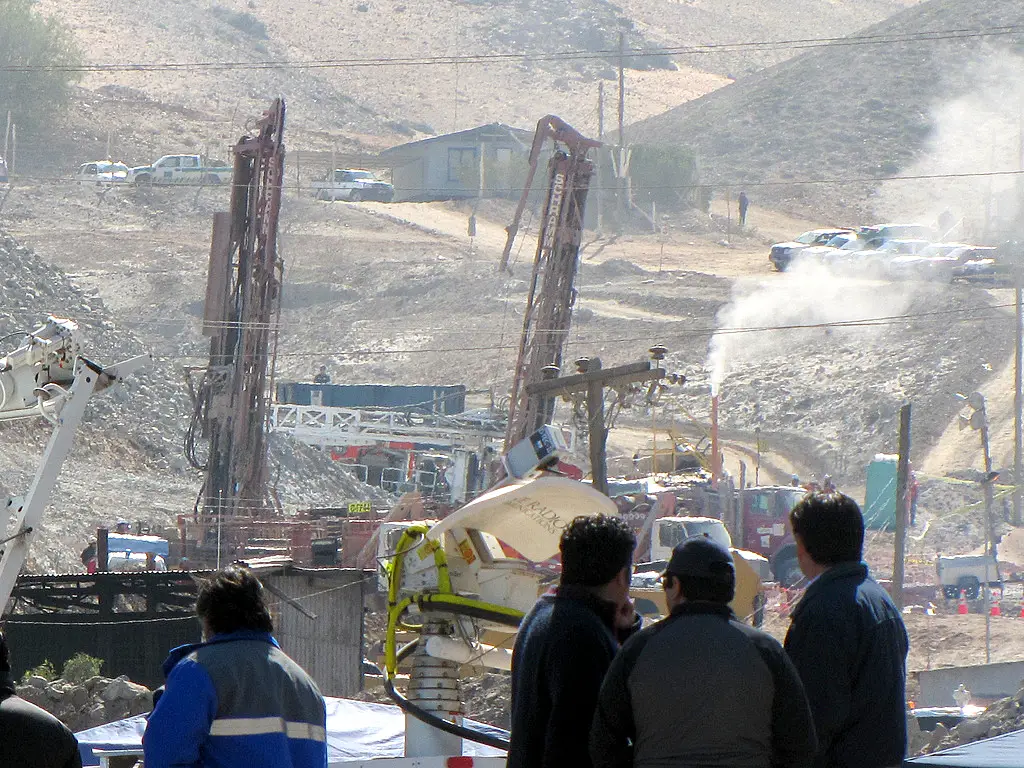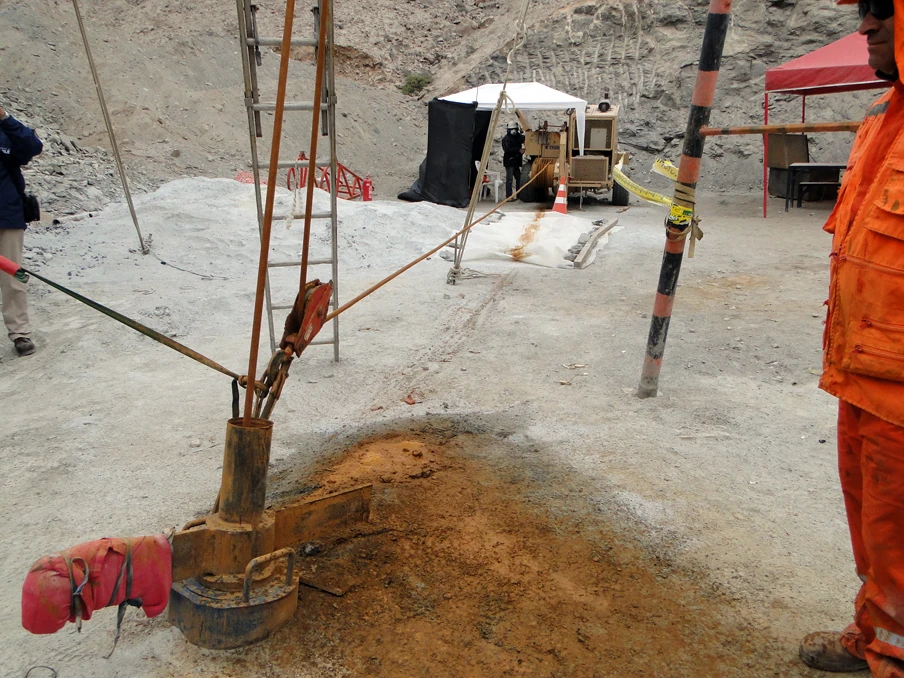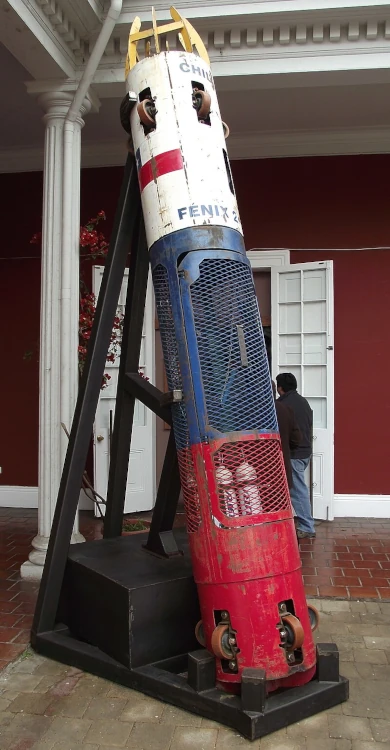India’s 41 workers are trapped in the Uttarkashi tunnel. I’m writing about 33 miners who were trapped in a gold mine in Chile for over two months until being rescued on October 13, 2010. This article may be useful in inspiring and motivating lessons learned in rescue operations.
South America’s Chile is situated along a lengthy, slender coastline bounded east by the Andes Mountains and west by the Pacific Ocean. The country is bordered to the north by Peru, to the northeast by Bolivia, to the east by Argentina, and to the south by the Drake Passage. Its climate ranges from the world’s driest desert, the Atacama, to the Mediterranean in the heart to a rainy moderate in the south. The northern desert is rich in minerals, particularly copper. The compact centre area dominates the population, politics, and agricultural resources, whereas the southern coast is a maze of canals, inlets, twisting peninsulas, and islands. Chile is now one of South America’s most stable and prosperous countries and a renowned Middle Power.
Regarding human, economic, and democratic advancement; press freedom; economic competitiveness; political stability; quality of life; political stability; per capita income; low perception of corruption; globalisation; and relatively low poverty rates, it leads all Latin American countries. It was the inaugural member of the Organisation for Economic Cooperation and Development (OECD) from South America. It is a founding member of the Union of American Nations and the United Nations.

Dateline Mine Trapping & Rescue Operations
August 5
For the miners of the San Jose Copper and Gold Mine in Copiapó in Chile’s Atacama Desert, this was, like any other, a normal routine mining day. But in an unusual accident, the 9 km long wide zigzag access route to over 2300 feet deep mine got blocked due to massive 7,00,000 tons of rock fall, collapsing the shaft in the lower reaches of the mine, trapping 33 miners in the 33 ft x13 ft x13 ft refuge chamber along with nine vehicles (3 pickup trucks, three drill trucks, two cranes vehicles and 1truck) one cot, basic food supplies and 17 gallons of water. It was feared that all of them would perish if not evacuated due to hunger, depression and asphyxia.
August 22
As the rescue operations were on, rescue workers heard tapping on a drill that had reached a depth of 688 meters, confirming that miners were alive. Video cameras were lowered, and the first video of the miners showed them to be in a better condition than feared, and their morale was high.
August 23
Food, water, medicines and communication equipment were sent down a hole, and the trapped miners could talk with their families and officials camping on the site. There had been reports of fisticuffs, weeping and acute depression among trapped miners caused by their bleak situation 17 days before they were found alive. It is understood that five men, who had been subcontracted to work at the mine and did not have close relations with others, had ‘broken away’ from the main group.
August 30
The rescuers decided the best way to free the trapped miners was to drill three shafts and winch them safely.
September 26
The first of the three rescue capsules built to lift miners underground arrived at the site.
October 9
The trapped miners celebrated as the drilling rig broke an opening through their underground chamber.
October 11
A test rescue capsule was successfully sent to within 40 ft of the trapped miners. The 13-foot capsule descended flawlessly in tests. The biggest of the three capsules built by the Chilean Navy engineers painted in the white, blue and red of the Chilean flag was named ‘Phoenix’ for the mythical bird.
October 12
Rescue operation commenced. Three rescuers were lowered to help and assist trapped miners in evacuation.
October 13-14
Anxiety and fear were unexpectedly replaced by tears of joy and relief when, at approximately 08:50 hrs IST, the initial capsule emerged from the aperture the size of a manhole. The first miner, Florencio Avalos, emerged from the missile-shaped rescue capsule with a broad grin following the half-mile journey to the surface. Onlookers applauded, chanted, and whistled “Chi! Chi! Le! Le!” The nation erupted in pure joy when the initial breakthrough rescue occurred in the coastal Atacama Desert shortly after midnight local time. Avalos, surrounded by his wife, his seven-year-old son, and then-Chilean President Sebastian Pinera, who was heavily engaged in an endeavour that had become a source of national pride, embraced his wife and son amid a cacophony of applause. One hour later, Mario Sepulveda, the most exuberant among them, placed second. ’I was with God and with the devil. And I reached out to God’, he said soon after he surfaced. On October 13, at 2300 hours IST, eighteen stranded miners were rescued. Each miner’s removal took nearly an hour, with shift superintendent Luis Urzua being the last to be extracted. His leadership enabled the men to survive for the first seventeen days without any external contact following the collapse. As the miners emerged individually, bereaved families wept, applauded, and embraced them. No one has ever survived being confined for such an extended period.
The capital, Santiago, was filled with the cacophony of car sirens. The mayor of Copiapó cancelled classes in the regional capital so that children and their guardians could watch the rescue operations on television in real-time. Almost every news channel worldwide provided live coverage of the extraordinary and flawless rescue operation. Every aspect of the rescue operation was carefully coordinated, and no financial resources were spared in procuring high-altitude drilling equipment and three distinct apertures into the copper and gold mine. The rescue operation was entrusted to President Pinera’s mining minister and the operations director of Codelco, the largest state-owned enterprise in the country. The magnum opus “Freedom from Hell,” which commenced on August 5 and endured for 69 days before the surfacing of the final miner on October 14, reached its miraculous conclusion with the miner’s escape.

Misinformation
While many details of miners’ physical and mental health and living conditions were reported, misconceptions and misinformation persisted as the ordeal continued and public fascination with their deprivation increased. Some predicted atrophied muscles, serious skin fungus, vitamin deficiencies, rotted teeth, and blindness on exposure to daylight. Mercifully, they did not suffer major health concerns. The trapped men kept fit and received excellent medical care and nutritious food. They were not confined to a ‘rescue chamber’ the size of a Manhattan studio apartment. Half a mile-long tunnels were open; they had places to exercise and use for waste. One miner ran several miles a day. They even had a waterfall to have regular showers. They requested shampoo and shaved for their families. Fresh air was pumped in to prevent asphyxiation. Unlike a coalmine where fear of methane gas persists, the San Jose was a copper and gold mine where the air had 90 % humidity and required 20 % oxygen like outside to sustain life.
Initial Medical Fears and their Management
They took aspirin and wore compression socks to prevent blood clotting from the quick ascent. The miners also wore jumpers because they would experience a shift in climate from about 90F (32C) underground to temperatures hovering near freezing. Panic attacks are the rescuers’ biggest concern. The miners’ pulse, skin temperature and respiration rate were constantly monitored around their abdomens. Helicopters wait on a nearby landing deck to fly the men to a local hospital for treatment.
Just after the miners were discovered alive, they were in danger. They had survived for 17 days on just two spoonfuls of tuna, a cup of milk, one cracker and a bit of peach topping every other day. Their digestive and insulin systems had nearly shut down, breaking down their body fat and muscle tissues. People on starvation diets can die by eating carbohydrates too quickly as the body struggles to make insulin in response. It can upset the electrolyte balance, stopping the heart. Urine test strips were sent down the tube, allowing Yonny Barrios, a miner with paramedic training, to report that about half the miners were dehydrated and spilling ketones and myoglobin proteins into their urine, a sign of muscles breaking down due to starvation and possibly sleeping on hard rocks. They were told to double their water intake nearly, and liquid gels with proteins and vitamins were sent down the three-inch tube in packets known as ‘passenger pigeons’. Eventually, all sorts of comfort goods were supplied through these narrow tubes: dismantled camp cots, clean clothes, letters, movies, dominoes, tiny bibles, toothbrushes, and skin creams. The smokers were first allowed only gum and nicotine patches, but doctors eventually relented and let 40 cigarettes a day go down. Barrios also took blood pressure readings, sent up urine and blood samples and gave shots against tetanus, pneumonia, meningitis and flu. Small fluorescent lights were sent down early in their ordeal, and a circadian rhythm was kept up with a red light at night.
Out of the Deep, but what next for the Miners?
Though the rescued miners appeared healthy and were hospitalised for two days for extensive medical checkups, an expert warned that they would need months of physical and psychological rehabilitation. Many suffered from bleeding gums, boils, acne, psoriasis, eczema, respiratory disorders, eye and other skin diseases due to humidity and poor hygiene conditions underground.
After over two months of confinement, miners were likely to be very argumentative, angry and depressed. The family care, publicity, media, and Hollywood film producers would likely confuse them enormously. The immediate physical problem was adjusting to the light; for that reason, each one was provided with Rs 22,000 Oakley sunglasses before surfacing out. Many of them were very tired and weak, needing intense medical care.
Though many have received job offers from other mines in the country, their skill being only mining, they would naturally return to mining either above or below the ground. The miners had to deal with media attention and possible Hollywood offers. Some have a flair for writing and can mint millions by penning their ordeal memoirs.

The Perks, the Gold and the Vow of Silence
The 33 trapped and rescued miners were set to make a fortune, as many TV companies offered up to Rs 2 crore each to tell their exclusive stories. Meanwhile, Chilean PR agents tried to sign up families in anticipation of lucrative book and movie deals. The miners were dubbed kamikazes, as their work was so dangerous that they were allowed to endorse a beer called Kamikaze and offered free clothing in exchange for endorsement deals. The other offers included deals to promote chocolate, drills and a sex-aid vitamin called Revive. The miners were given numerous gifts, including a winemaker’s free wine for a year, while a local businessman had gifted each with Rs 50,000. Ariel Ticona, whose wife gave birth to a baby while he was trapped, was offered free baby products. The Chilean President invited the miners to the presidential palace and gifted them mementoes and cash awards while the rescuers planned to play a friendly football match with them.
While the company that owned the mine has filed for bankruptcy, the government-owned mining company Codelco, brought in for the rescue, had an unexpected discovery of vast untapped seams of gold, silver, and copper while drilling the escape tunnel and boreholes.
Intriguingly, all 33 miners had signed a contract vowing never to tell exactly what happened during the first 17 days of despair before a borehole reached their refuge on August 22. Until then, the world had not known that they were alive.
A GREAT Human Triumph
The rescue of the 33 trapped miners more than 700 meters underground for 69 days is a tale of human grit and achievement, surpassing all physical and psychological instincts for survival. While the trapped miners displayed an indomitable spirit against the titanic struggle for survival, Chile’s commitment and engineering precision in planning the rescue operations and designing the special capsule deserve all the praise. Commendations are also due to the miners camped out ever since the disaster struck, the families and friends of the trapped miners who emerged from a living tomb, the teams that managed the miner’s rescue operation, the Chilean government led by President Sebastian Pinera, whose popularity rating soared high on successful completion of rescue operations and the electronic media that led the world to share this extraordinary experience.
It is hoped that disaster management authorities worldwide will learn important lessons to ensure the safety and security of workers involved in hazardous industries, and we pray that Indian authorities will draw meaningful lessons in rescuing our 44 trapped workers at the earliest.
